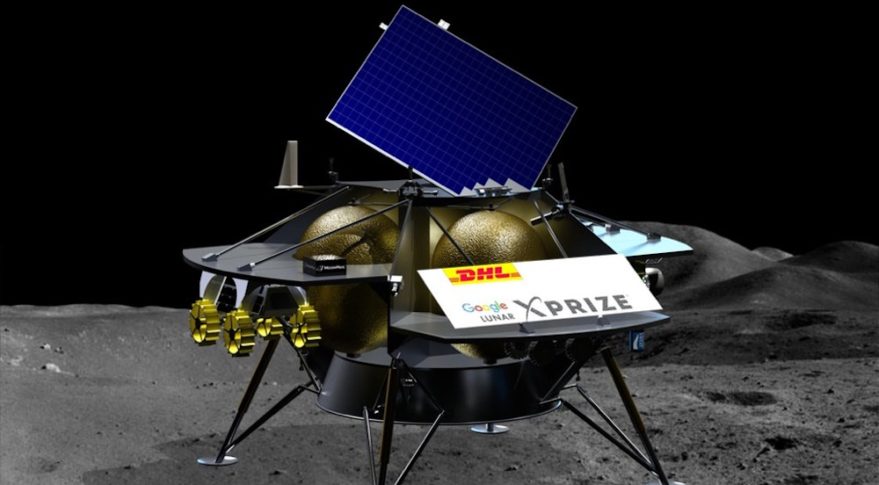NASA Requests Information on Commercial Lunar Missions

WASHINGTON — Six months after seeking information about instruments it could fly to the moon, NASA has issued a request for information for commercial systems that could transport payloads there.
The May 1 request for information (RFI) seeks details from U.S. companies about their present and planned capabilities to deliver "instruments, experiments, or other payloads" to the surface of the moon in order to meet NASA's exploration, science and technology development needs.
"NASA is interested in assessing the availability of payload transit and delivery services from Earth to the lunar surface as early as fiscal year 2018 and through the next decade," the RFI states. "This approach offers NASA the potential to simultaneously address critical strategic objectives related to exploration, science, and technology demonstration using commercially provided domestic space services and hardware." [How SpaceX's Private Moon Flight in 2018 Will Work]
The RFI notes that NASA will use the responses to plan any future request for proposals, with no guarantee that there will be a solicitation. However, agency executives said they were interested in the prospects of using commercial systems.
"Today's call for ideas from our industry partners is an important step for us to continue lunar exploration and beyond," Thomas Zurbuchen, NASA associate administrator for science, said in a May 1 statement accompanying the RFI. "After numerous successful human and robotic missions, NASA remains committed to continue high-priority lunar science."
"NASA is interested in understanding how commercial lunar cargo transportation opportunities can help advance our knowledge of the moon and its potential resources for exploration," said Bill Gerstenmaier, NASA associate administrator for human exploration and operations.
The RFI does not set any technical requirements, such as payload mass or power, that companies would have to meet. It does require the use of U.S.-manufactured launch vehicles except in those cases where NASA would only fly a hosted payload, as defined by national space transportation policy, on a commercial mission. Companies could also propose selling science and engineering data from their spacecraft to NASA, or return the payload to Earth.
Get the Space.com Newsletter
Breaking space news, the latest updates on rocket launches, skywatching events and more!
NASA issued this RFI exactly six months after a similar one that sought information on instruments, rather than transportation systems. That RFI sought details about instruments that could meet NASA's "strategic knowledge gaps" for human exploration. NASA officials said then that they were primarily interested in instruments that had already been built as flight spares for other missions, or which could be assembled quickly with NASA contributing, at most, only a fraction of the cost to build it.
Several companies could be able to meet NASA's lunar transportation needs in the next several years. Florida-based Moon Express is one of five finalists for the Google Lunar X Prize, a competition with a $20 million grand prize for the first privately-developed spacecraft to land on the moon and travel at least 500 meters across its surface. Moon Express is developing a lander for launch by Rocket Lab, a U.S.-New Zealand company, for launch later this year.
A second Google Lunar X Prize finalist, Synergy Moon, is considered "international" by the X Prize Foundation, but has a San Francisco mailing address. It has disclosed few details about its lander and launch plans. Pittsburgh-based Astrobotic, which dropped out of the competition last year, is continuing to develop lunar landers for launch in the next several years.
A new, and far larger, entrant into the commercial lunar lander market is Blue Origin. The company revealed earlier this year its "Blue Moon" concept for landing large amounts of cargo on the moon, which it argued could support potential future NASA lunar bases or other missions there. Blue Origin proposed developing the Blue Moon system as part of a public-private partnership with NASA, sharing its costs.
"Blue Origin is willing to significantly invest in this development as part of a public-private partnership with NASA in the interest in achieving a return to the moon, which we believe to be a worthy national goal," Rob Meyerson, president of Blue Origin, said in April 26 testimony before the space subcommittee of the Senate Commerce Committee.
This story was provided by SpaceNews, dedicated to covering all aspects of the space industry.
Join our Space Forums to keep talking space on the latest missions, night sky and more! And if you have a news tip, correction or comment, let us know at: community@space.com.

Jeff Foust is a Senior Staff Writer at SpaceNews, a space industry news magazine and website, where he writes about space policy, commercial spaceflight and other aerospace industry topics. Jeff has a Ph.D. in planetary sciences from the Massachusetts Institute of Technology and earned a bachelor's degree in geophysics and planetary science from the California Institute of Technology. You can see Jeff's latest projects by following him on Twitter.










